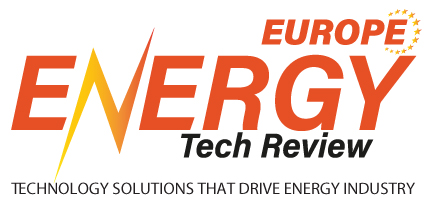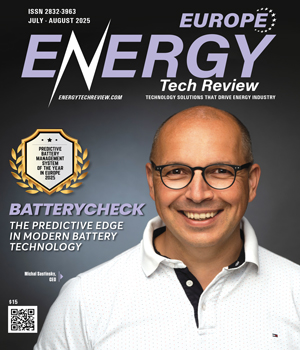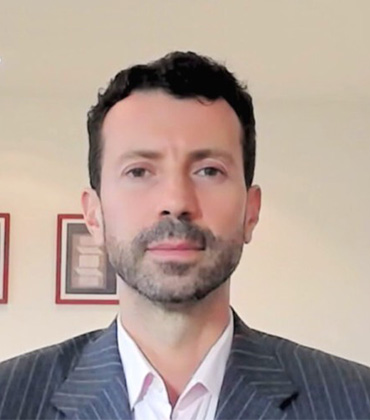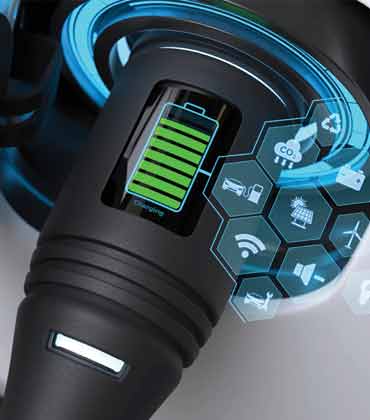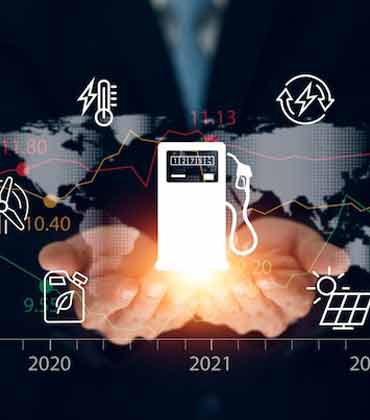Batteries power everything from electric vehicles to critical infrastructure, making their reliability non-negotiable. Yet managing battery systems remains a complex challenge, especially in dynamic or high-demand environments. BatteryCheck is addressing this head-on, transforming battery management from a reactive necessity into a strategic advantage. The company specialises in predictive battery monitoring and analytics, designed for manufacturers, service providers, and integrators who depend on batteries but may lack the internal expertise to manage them proactively. Offering deep, real-time insights into battery behaviour, BatteryCheck enables organisations to anticipate potential failures before they occur, ensuring consistent performance whether batteries are deployed as primary power sources or critical backups. Unlike traditional battery management systems, which primarily focus on monitoring charging cycles, cell balancing, safety, and immediate health metrics, BatteryCheck adopts a forward-looking approach. The platform aggregates telemetry data—such as voltage, current, temperature, and calculated performance metrics—through an API into its sophisticated analytics engine. After processing, it generates predictive alerts, actionable recommendations, and health forecasts, delivered seamlessly via API integration. Clients can access this intelligence through BatteryCheck’s intuitive dashboard, visualising individual battery analytics or integrating the data directly into their existing systems. In doing so, BatteryCheck empowers stakeholders to shift from reactive maintenance to proactive optimisation, ensuring batteries perform reliably and extending their operational life. Flexibility at the Core Building a truly versatile battery analytics platform required flexibility from the start. BatteryCheck’s solution is engineered to adapt across a broad spectrum of chemistries and applications, operating seamlessly whether a company relies on lithium-ion, lead-acid, or emerging battery technologies. Supporting both first-life applications, such as electric vehicles, and second-life use cases where repurposed batteries are used for energy storage, BatteryCheck delivers powerful insights through a single, intuitive interface. This flexibility extends beyond software. Recognising that not all batteries are equipped with sophisticated management systems, BatteryCheck offers a suite of third-party sensors capable of measuring current, voltage, temperature, and other key parameters. These sensors can be retrofitted onto legacy batteries and transmit real-time data via machine-to-machine (M2M) SIM cards directly to BatteryCheck’s backend, bridging critical gaps in battery fleets without costly infrastructure overhauls.
Renewable Energy Trading As a Service Company Of The Year In Europe 2025
As global demand for clean power surges, renewable asset owners—from wind farm operators to solar developers— are facing a critical question: How can fluctuating, weather-dependent generation be translated into stable, predictable revenue streams? To address this challenge, the renewable energy sector is undergoing a strategic shift—from a pure production mindset to one centered on revenue optimization. This evolution involves integrating technology, data, and financial instruments to ensure that every kilowatt-hour aligns with market opportunities. SAMAWATT stands as a trusted ally to make that shift actionable. Founded in 2018 and headquartered in Switzerland, SAMAWATT has emerged as a high-performing enabler of the Renewable Energy Trading-as-a-Service (RETaaS) model. As subsidies decline and competition intensifies, SAMAWATT provides asset operators with the tools and insights needed to transform volatility into value At the heart of SAMAWATT’s value proposition lies its flagship platform, SAMA-Asset™—a cloud-native, AI-driven system that redefines how wind, solar, and hybrid assets participate in European and global electricity markets. Designed to optimize forecasting, dispatch, and real-time market bidding, the platform routinely delivers 20 to 50 percent gains in net trading profits for clients. It connects directly to SCADA systems, weather data, and market exchanges, using high-frequency data and stochastic programming to optimize trades across day-ahead, intraday, balancing, and ancillary markets. Built for speed and scale, the SAMA-AssetTM platform eliminates the lengthy onboarding and capital investment cycles associated with legacy systems. Asset owners can begin seeing results within weeks, making it an ideal solution for utilities, developers, and virtual power plant (VPP) operators alike. After going live, each client is assigned a dedicated success engineer and has access to 24/7 support. Weekly performance reviews are conducted during the first months, ensuring complete knowledge transfer and allowing for early correction of any anomalies. SAMAWATT’s technological ecosystem extends beyond SAMA-Asset™. Its proprietary suite of algorithmic trading blueprints, SAMA-Strategies™, is explicitly built for renewable portfolios navigating wholesale power markets. This system is currently operational across 15 European countries and has been instrumental in supporting zero-imbalance, volume-shifting, and multi-market optimization arbitrage strategies. It has enabled clients to dynamically manage exposures and seize short-term pricing opportunities— unlocking new value streams that were previously out of reach. Furthermore, its specialized module for battery storage, SAMA-BATT™, employs a hybrid model that integrates digital twins of each battery system with market-based reinforcement learning. This approach optimizes charge-discharge cycles across revenue streams—from day-ahead arbitrage to frequency regulation—while minimizing battery degradation. The result is a 30 percent increase in battery-based income for clients. .
Energy Storage Solution in Europe 2025
Hitting the energy efficiency bull’s eye for cleaner and greener operations is no longer a distant goal. In the modern energy landscape, where technological advances meet global urgency, E-Storage Engineering has created a foothold in storage systems as a specialist in electrochemical solutions. By integrating innovations with a forward-thinking approach, it delivers advanced, long-term energy storage solutions to various industries. E-Storage Engineering is the only design company in Italy that has adopted an engineering systems methodology for energy storage development. Its reputation has attracted collaborations with prestigious institutions like MIT and leading researchers worldwide. The company’s engineering principles are also applied through spin-off consultancy, which offers expert guidance to customers on implementing electrochemical energy systems. Working with university offshoots, utility companies and multinational corporations, E-storage Engineering is pivotal in driving the new era of energy adoption across Europe and beyond. A Tale of Transformation E-Storage Engineering’s genesis was driven by Dr. Massimo Guarnieri’s transition from a successful career in nuclear fusion engineering to more accessible facets of the energy sector. Having spent decades in magnetic confinement research, he sought a new path that led him to electrochemical energy systems. Guarnieri’s journey expanded to include lithium-ion batteries and, eventually, flow batteries, which have since become central to E-Storage Engineering’s operations. A defining moment was the creation of an engineering-centric framework for energy storage, a rare approach in a field dominated by chemistry-focused, small-scale systems. “We understood that developing scalable energy solutions required an engineering approach that goes hand-in-hand with chemistry advancement,” says Guarnieri. Today, E-Storage Engineering integrates diverse specialities, including electrical, mechanical, energy and chemical engineering, each contributing to creating technologies for various applications, from mobile energy storage to large-scale grid solutions.
CXO INSIGHTS

Committed to Developing the Hydrogen Projects of Today and Tomorrow
Vincent Designolle, Director, Delphy Hydrogen Storage, Vallourec

Green Hydrogen - A Game Changer
Rudolf Zauner, Senior Innovation Manager, VERBUND AG

Resolving Sustainability Challenges in UK Data Centres
Antony White, Client Delivery Manager - Central Delivery Team, UK Power Networks Services

Boosting the Shift from Waste to Energy
Erik Goldberg, Manager Organics, Renewi Organics

What Should the UK do to Maintain the Momentum Achieved as a Global Leader Delivering Net Zero?
Marcos Matijasevich, Head of Low Carbon Transition, Essar Oil (UK)

Using Market Forces to Incentivise the Production of Hydrogen
Dr. Tryggvi Thor Herbertsson, Global Head of Hydrogen Strategy and Partnership, Qair Group
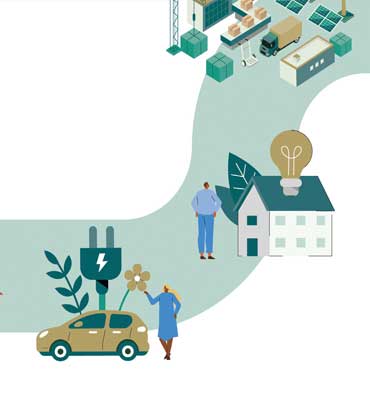
Leading Innovation in Renewable Energy
Alexander Vogt, Head of Metering Services, LichtBlick SE
IN FOCUS
Europe's Shift in Battery Technology Unlocking Predictive Management Systems
Europe is undergoing a transformative shift in battery technology, driven by increasingly stringent environmental regulations, the rapid growth of the electric vehicle (EV) market, and the surging demand for safer and more efficient energy.
Energy Trading as a Service: Powering Europe's Decarbonised Future
Energy Trading as a Service (ETaaS) optimises energy portfolios, enhances market efficiency, and facilitates the integration of renewable sources in Europe's evolving energy landscape.
EDITORIAL
The Quiet Shift Powering Europe's Energy Future
Not long ago, a fully renewable and resilient energy system across Europe seemed like a distant long-term goal. Batteries were limited, energy trading was rigid, and clean power often came at the cost of compromise. That story is starting to change. Two technologies are quietly transforming how Europe stores and trades energy. One ensures power is always ready. The other moves it with speed and intelligence across markets. Predictive battery management systems are now far more than simple monitoring tools. Powered by AI and real-time diagnostics, they anticipate issues, optimise performance, and extend battery life. Whether stabilising the grid in Scandinavia or supporting EV fleets in the Netherlands, they make energy storage more reliable and more strategic. At the same time, renewable energy trading is becoming faster, smarter, and more accessible. Digital platforms allow producers to sell clean power directly into the market, responding to real-time demand and price signals. The process is automated, transparent and far more inclusive than traditional systems. Green hydrogen integration is also gaining momentum. As electrolysis technologies become more cost-effective, excess renewable energy is increasingly being converted into green hydrogen, stored, transported, and even traded across borders. This adds a crucial layer of flexibility and decarbonisation to sectors that are difficult to electrify, such as heavy industry and long-haul transport. Meanwhile, cross-border grid interconnectivity is expanding across Europe. Projects like the North Sea Wind Power Hub and enhanced HVDC (high-voltage direct current) connections are allowing countries to share renewable energy more efficiently. These interconnectors stabilise supply, reduce waste, and ensure power can move where it's needed most. Europe is also witnessing a sharp rise in energy prosumer participation. Households and small businesses equipped with rooftop solar and home batteries are now active players in local energy markets. Peer-to-peer energy trading, supported by blockchain and smart contracts, is turning neighbourhoods into decentralised microgrids that are resilient, sustainable and locally controlled. The real breakthrough comes when these technologies work together. Stored energy becomes a tradable asset. Trading platforms gain new flexibility. The result is a more agile and adaptive energy ecosystem that responds in real-time to both demand and disruption. In this edition, we spotlight BatteryCheck for its innovative work in predictive battery intelligence and João Amaral, CTO & Country Manager at Voltalia, for his leadership in building energy infrastructures that are smarter, cleaner, and futureready. We hope that the valuable insights from industry leaders featured in this edition will help you make informed decisions for your business.
